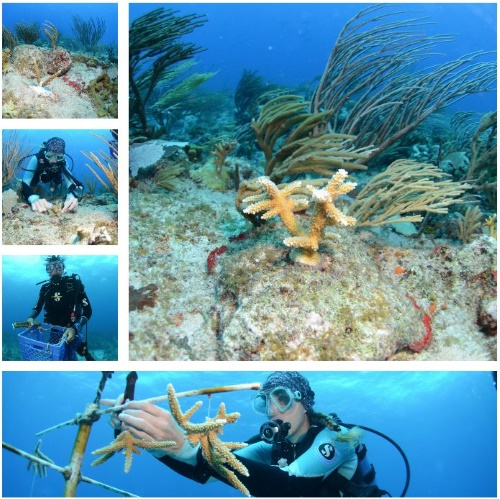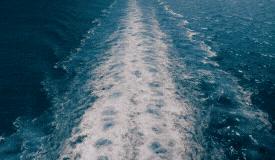 PHILIPSBURG:--- Last week the Nature Foundation successfully outplanted several Acropora coral fragments on the dive site Coralita in the Man of War Shoal Marine Protected Area of St. Maarten. These coral fragments have been growing in the Nature Foundation’s coral nursery for several years, some of these fragments where even Hurricane Irma survivors and are now able to flourish on the local coral reefs. As part of the Coral Restoration Project, the Nature Foundation established a coral nursery to increase the growth of coral fragments, eventually, these fragments are transplanted to coral restoration sites to improve the local reefs.
PHILIPSBURG:--- Last week the Nature Foundation successfully outplanted several Acropora coral fragments on the dive site Coralita in the Man of War Shoal Marine Protected Area of St. Maarten. These coral fragments have been growing in the Nature Foundation’s coral nursery for several years, some of these fragments where even Hurricane Irma survivors and are now able to flourish on the local coral reefs. As part of the Coral Restoration Project, the Nature Foundation established a coral nursery to increase the growth of coral fragments, eventually, these fragments are transplanted to coral restoration sites to improve the local reefs.
After Hurricane Irma, especially the coral species ‘Staghorn’ (Acropora cervicornis) almost totally disappeared from St. Maarten reefs due to the massive storm surge and the indirect impacts of the hurricane. “Only two fragments were left in our coral nursery and 95% of the mother colonies on the reefs were wiped out. Fortunately, we were able to save one viable staghorn fragment, which now have turned into ten colonies outplanted on our reefs and several fragments still growing in the nursery. The new Staghorn fragments are doing well, but the growth is slow, although staghorn is one of the fastest-growing corals it still only grows about a centimeter per month. We hope to see a comeback of this import reef-building stony coral on our reefs” explained Melanie Meijer zu Schlochtern Manager at the Nature Foundation St. Maarten.
Besides Staghorn corals, Elkhorn (Acropora palmata) fragments were outplanted on St. Maarten reefs, the Elkhorn colonies are showing, unfortunately, less growth, and some did not survive or even lost significant tissue. “We are concerned about the Elkhorn fragments, although they are more abundant than the Staghorn corals on our reefs still about 80% was damaged during Hurricane Irma and we had only 10 fragments left in our coral nursery after Hurricane Irma. We are not sure why the outplanted Elkhorn corals are hardly thriving, as their mother colonies are slowly showing signs of recovery, but deteriorated water quality could be the reason” continued Melanie Meijer zu Schlochtern.
The Nature Foundation St. Maarten outplanted in total 64 Acropora fragments in the Man of War Shoal Marine Park over the course of 1.5 years and hopes to find additional funding in order to continue their coral restoration project. Mainly in order to continue to restore some of the damage to the local coral reefs caused not only by the Hurricanes but also by several issues the island has been facing over the last few decades, in terms of unrestrained coastal development and improperly managed waste-water.
Acropora corals (Staghorn and Elkhorn) are not affected by the destructive disease called ‘Stony Coral Tissue Loss Disease’ which is currently affecting St Maarten’s stony corals tremendously, however their abundance has mostly been lost since the 1980’s, especially on St. Maarten hardly much Acropora Corals can be found. Acropora corals are currently listed as ‘Critically Endangered’ on the IUCN Red List and are a significant reef building coral, the loss of these corals has large negative effects on biodiversity, fish biomass, and coastal protection. The Nature Foundation continues to monitor and maintain their coral nursery and outplanted corals and create new colonies to be planted back on our denuded coral reefs.
The Nature Foundation St Maarten is restoring Elkhorn (Acropora palmata) and Staghorn (A. cervicornis) coral reef zones by establishing a coral nursery to grow coral fragments and transplant corals at selected restoration sites. The goal is to raise these new coral colonies in nurseries to repopulate denuded coral reefs with fresh corals. Small colonies are specifically selected for characteristics such as robustness and fast growth to create resilient populations of new corals. The project was made possible with the assistance of the Coral Restoration Foundation, NOAA, the Coral Reef Restoration Consortium and the Dutch Caribbean Nature Alliance.












